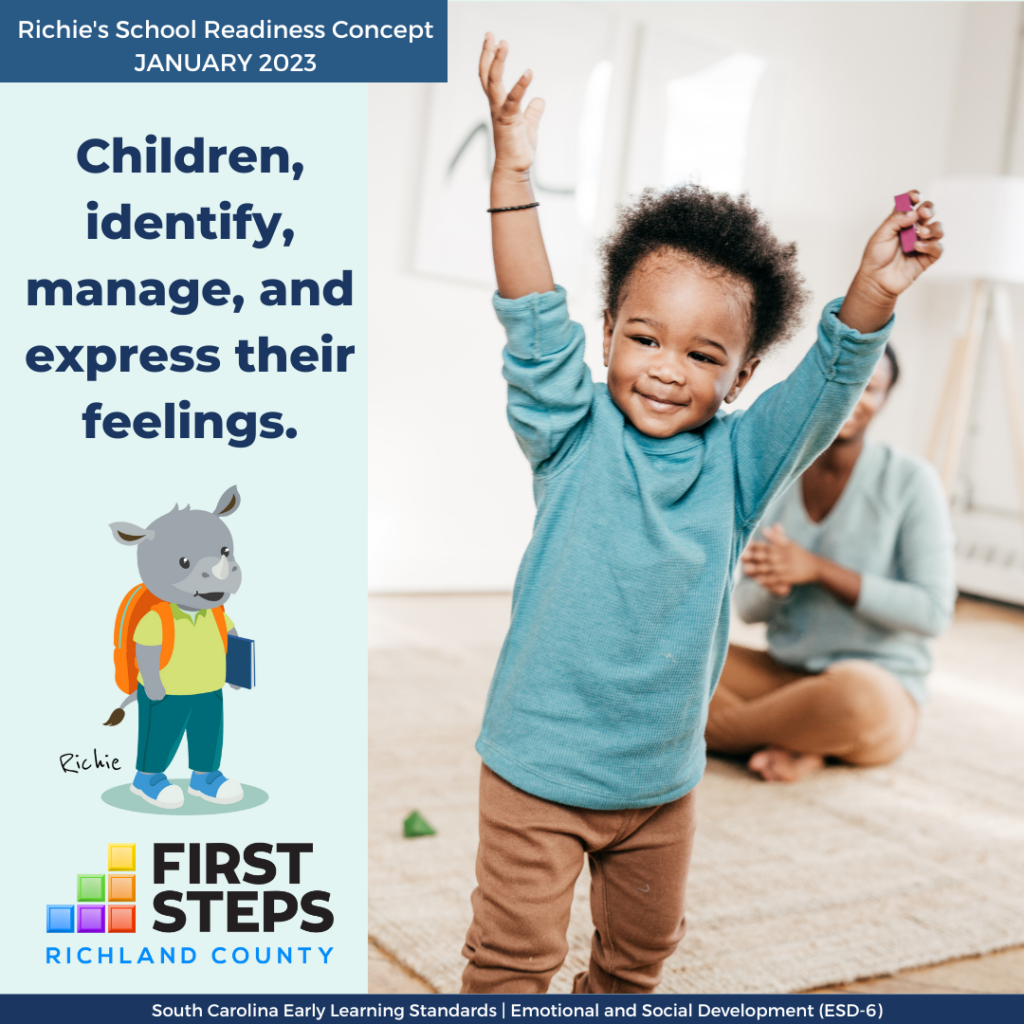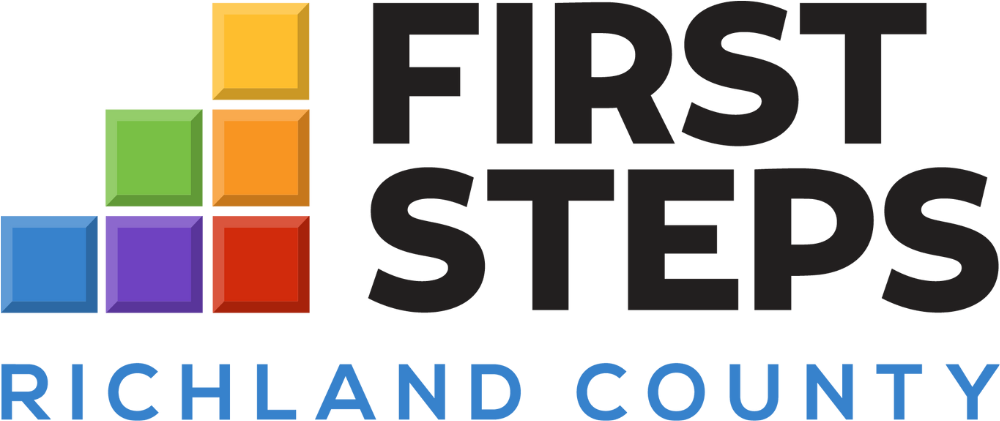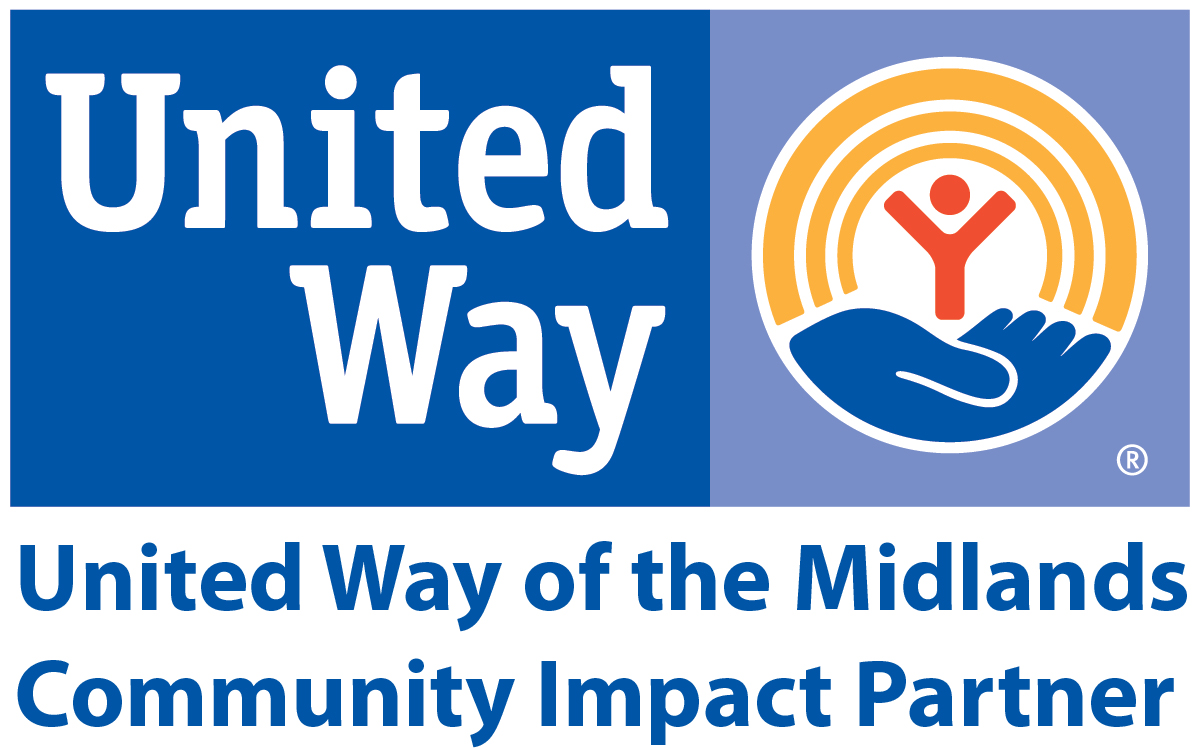
Each month, Richland First Steps selects one school readiness goal from the SC Early Learning Standards (SCELS) to spotlight throughout our programs for children, families, and child care providers.
This month’s concept comes from the Emotional and Social Development domain of the SCELS. Like all of the standards, there are developmental indicators that show a child’s progress on this goal at each stage:
Infants (Birth to 12 months)
- Express a range of emotions (happiness, sadness, fear, and anger) with their face, body, and voice.
- Show when they feel overwhelmed or are in distress or pain (cry, yawn, look away, extend arms or legs, arch their body, fuss).
- Soothe themselves (suck thumb or pacifier, shift attention, snuggle with soft toy).
Younger Toddlers (8 to 21 months)
- Express a range of emotions (happiness, sadness, fear, and anger) with their face, body, and voice.
- Use body language, facial expression, and sometimes words to communicate feelings (clap when happy, pout and hunch shoulders when sad, shout “Whee!” when excited.
- Separate from parent or main caregiver without being overcome by stress.
- Find comfort and calm down in a familiar setting or with a familiar person.
Older Toddlers (18 to 36 months)
- Express a range of emotions (happiness, sadness, fear, anger, disgust, tenderness, hostility, shame, guilt, satisfaction, and love) with their face, body, vocal sounds, and words.
- Communicate to make needs known.
- Manage emotions and control impulses with guidance and support (Say “I don’t like that!” instead of hitting; wait by door instead of running ahead when excited to go out).
- Display emotional outbursts less often.
Younger Preschoolers (36 to 48 months)
- Express a range of emotions (happiness, sadness, fear, anger, disgust, tenderness, hostility, shame, guilt, satisfaction, and love) with their face, body, vocal sounds, and words.
- Use a variety of words or signs to express and manage feelings more clearly.
- Describe reasons for their feelings (“I’m sad because Grandma’s leaving.” “That makes me mad when you do that!”)
Older Preschoolers (48 to 60+ months)
- Express a range of emotions (happiness, sadness, fear, anger, disgust, tenderness, hostility, shame, guilt, satisfaction, and love) with their face, body, vocal sounds, and words.
- Independently manage and express feelings effectively most of the time.
- Use a larger vocabulary for talking about different feelings (“I’m frustrated with that puzzle!” “I’m excited about our trip.”).
- Give reasons for their feelings that may include thoughts and beliefs as well as outside events (“I’m happy because I wanted to win and I did.”).
- Use problem-solving strategies when feeling angry or frustrated.
Learn more:

